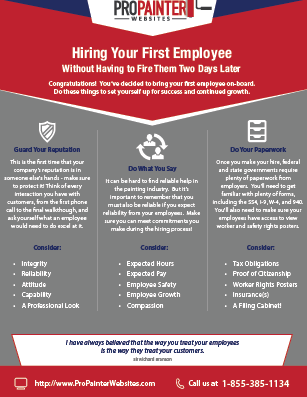Check Out The Effect Of Seasonal Components On The Effectiveness Of Industrial External Painting And Identify The Optimum Times To Achieve Long-Lasting Outcomes For Your Job
Check Out The Effect Of Seasonal Components On The Effectiveness Of Industrial External Painting And Identify The Optimum Times To Achieve Long-Lasting Outcomes For Your Job
Blog Article
Article Author-Ford Browne
When you're intending an industrial outside painting project, seasonal aspects can make or damage your outcomes. You'll want to think about just how temperature level and humidity influence paint application and drying times. Selecting the appropriate period can ensure your paint sticks properly and lasts longer. However which periods are really the most effective for this type of job? Allow's explore the crucial elements that can impact your project's success.
The Influence of Temperature on Paint Application
When you're planning a commercial outside painting job, the temperature can considerably impact how well the paint sticks and dries.
Ideally, you want to paint when temperature levels vary in between 50 ° F and 85 ° F. If it's also cool, the paint might not cure correctly, leading to problems like peeling off or breaking.
On the other hand, if it's too hot, the paint can dry out too promptly, preventing proper bond and resulting in an unequal finish.
You need to also take into consideration the moment of day; morning or late afternoon uses cooler temperature levels, which can be more beneficial.
Always check the producer's referrals for the certain paint you're making use of, as they often provide assistance on the perfect temperature array for optimal outcomes.
Moisture and Its Effect on Drying Times
Temperature level isn't the only environmental aspect that affects your business exterior painting job; humidity plays a significant function also. High moisture levels can slow down drying times substantially, impacting the general top quality of your paint job.
When the air is saturated with wetness, the paint takes longer to heal, which can cause problems like inadequate bond and a greater risk of mildew development. If you're repainting on a particularly damp day, be gotten ready for prolonged wait times in between layers.
It's important to check neighborhood climate condition and plan appropriately. Ideally, go for house painters in chicago between 40% and 70% for optimum drying.
Maintaining these factors in mind ensures your task stays on track and provides a long lasting coating.
Best Seasons for Commercial Outside Paint Projects
What's the best season for your commercial outside paint jobs?
Springtime and very early loss are commonly your best bets. During these periods, temperatures are mild, and moisture degrees are frequently lower, developing optimal problems for paint application and drying out.
Prevent summertime's intense heat, which can cause paint to completely dry as well promptly, causing bad adhesion and coating. In a similar way, winter's cool temperature levels can prevent proper drying out and curing, running the risk of the long life of your paint job.
Aim for days with temperature levels in between 50 ° F and 85 ° F for ideal results. Keep in https://kylerajtck.bloggactivo.com/33590680/transform-your-home-s-exterior-the-benefits-of-working-with-specialist-home-painters to check the regional weather prediction for rainfall, as damp conditions can ruin your task.
Planning around these variables ensures your paint job runs efficiently and lasts longer.
Final thought
To conclude, preparing your business outside painting tasks around seasonal factors to consider can make a considerable difference in the result. By organizing job throughout the optimal temperatures and moisture levels, you'll make sure much better bond and drying out times. Bear in mind to keep an eye on neighborhood weather prediction and select the correct time of year-- springtime and very early loss are your best choices. Taking mouse click the following post will certainly assist you achieve a resilient and expert surface that lasts.
